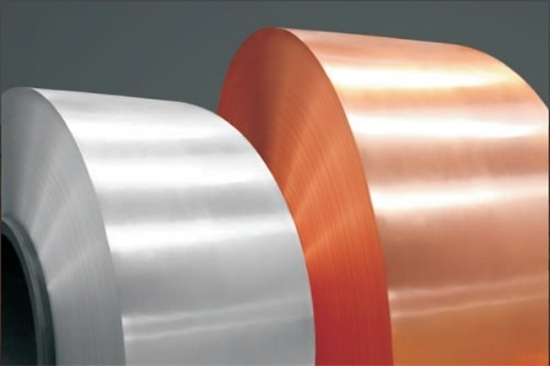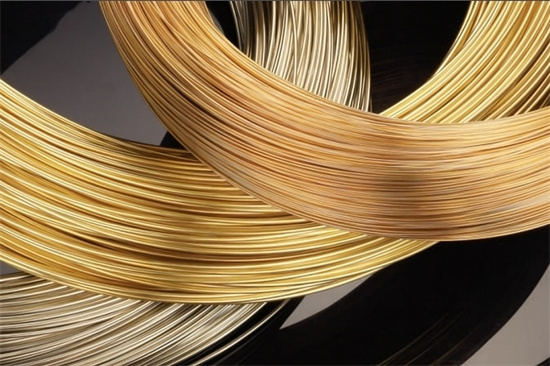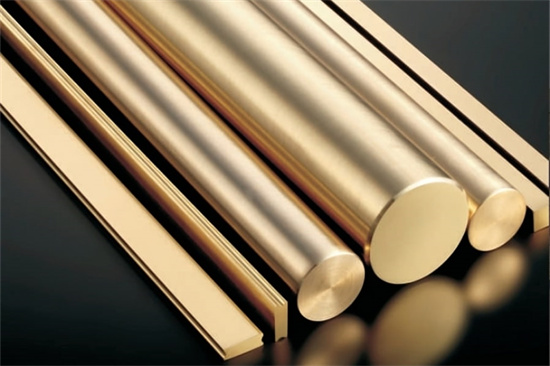


Complete Cu-Zn Brass Guide: Outstanding Properties and Applications
Low MOQ
Provide low minimum order quantity to meet different needs.
OEM & ODM
Provide customized products and design services to meet unique customer needs.
Adequate Stock
Ensure fast order processing and provide reliable and efficient service.
Customer Satisfaction
Provide high quality products with customer satisfaction at the core.
share this article
Table of Contents
Brass is one of the most versatile alloys you can encounter in the world of manufacturing and engineering. Specifically, Cu-Zn Brass—an alloy of copper (Cu) and zinc (Zn)—has been a cornerstone material for centuries. From its golden appearance to its excellent mechanical properties, Cu-Zn brass has found applications across industries ranging from plumbing to musical instruments. But what makes this alloy so special? Why do engineers and manufacturers keep turning to Cu-Zn brass for their projects?
In this ultimate guide, we’ll dive deep into everything you need to know about Cu-Zn brass—whether you’re selecting materials for a new product or just curious about its properties. We’ll cover the basics, types, applications, and some insider tips on how to get the most out of this highly adaptable alloy.
Overview of Cu-Zn Brass
What is Cu-Zn Brass?
At its core, Cu-Zn brass is a mixture of copper and zinc, typically with a copper content ranging from 55% to 95%, and zinc making up the remainder. The exact ratio of copper to zinc can significantly alter the material’s properties, making brass more malleable, stronger, or even more corrosion-resistant depending on the intended application.
Unlike bronze (which is primarily copper and tin), Cu-Zn brass is known for its golden hue, which makes it an attractive choice for decorative applications, in addition to its functional uses.
Key Characteristics of Cu-Zn Brass
- Corrosion Resistance: While not as corrosion-resistant as pure copper, brass still holds up well in atmospheric conditions, especially in terms of tarnish resistance.
- Malleability: The zinc content makes brass more malleable than copper, allowing it to be easily shaped into complex forms.
- Good Strength: Depending on the zinc content, brass can exhibit impressive tensile and yield strength, making it suitable for structural applications.
- Electrical Conductivity: Brass retains some of copper’s good electrical conductivity, though it’s less conductive than pure copper.
- Workability: Cu-Zn brass can be easily worked, either by forging, casting, or machining, making it a favorite in manufacturing industries.
Types, Composition, and Properties of Cu-Zn Brass
The properties of Cu-Zn brass can be finely tuned by adjusting the ratio of copper to zinc, and in some cases, adding trace amounts of other elements like lead, tin, or aluminum. Each type of brass has specific advantages depending on the design requirements.
Types and Composition of Cu-Zn Brass
| Brass Type | Copper (Cu) Content | Zinc (Zn) Content | Additional Elements | Primary Properties |
|---|---|---|---|---|
| Alpha Brass | 65-90% | 10-35% | – | Excellent corrosion resistance, good cold-working properties, ductile at room temp. |
| Alpha-Beta Brass | 55-65% | 35-45% | – | Tougher than alpha brass, can be hot worked, moderate corrosion resistance. |
| Beta Brass | 45-55% | 45-55% | – | Very strong and hard, less ductile, typically used for casting and forging. |
| Muntz Metal | 60% | 40% | – | High strength, excellent for marine applications, high resistance to corrosion. |
| Leaded Brass | 55-65% | 35-45% | Lead (up to 3%) | Improved machinability, used in high-precision parts, somewhat lower corrosion resistance. |
| Tin Brass | 60-70% | 30-40% | Tin (up to 2%) | Higher corrosion resistance than standard brass, used in marine and high-moisture environments. |
| Aluminum Brass | 75-85% | 15-25% | Aluminum (up to 2%) | Excellent corrosion resistance, especially in seawater, higher strength than standard brass. |
Alpha Brass
Alpha brass is highly ductile and easy to work with, making it great for cold working processes like rolling or stamping. It’s commonly used in decorative items, jewelry, and musical instruments.
Beta Brass
On the other hand, Beta brass is much harder and stronger, though less ductile. This makes it ideal for applications where strength is more important than malleability, such as in gears and valves.
Mechanical and Physical Properties of Cu-Zn Brass
The mechanical properties of Cu-Zn brass vary widely based on its composition, but here’s a general breakdown of what you can expect from some of the most common types.
| Property | Alpha Brass | Alpha-Beta Brass | Beta Brass | Leaded Brass | Aluminum Brass |
|---|---|---|---|---|---|
| Tensile Strength (MPa) | 250-400 | 350-500 | 500-650 | 300-450 | 500-600 |
| Yield Strength (MPa) | 100-200 | 150-300 | 400-550 | 150-250 | 400-550 |
| Hardness (HB) | 50-100 | 100-150 | 150-200 | 80-120 | 150-200 |
| Elongation at Break (%) | 20-40% | 10-20% | 5-10% | 15-25% | 10-20% |
| Density (g/cm³) | 8.4-8.7 | 8.4-8.7 | 8.4-8.7 | 8.5-8.75 | 8.5-8.75 |
| Electrical Conductivity (% IACS) | 28-40% | 20-30% | 15-20% | 20-30% | 15-25% |
Applications of Cu-Zn Brass
Cu-Zn brass is known for its versatility. Its uses span across industries due to its workability, corrosion resistance, and aesthetic appeal. Let’s break down some of the most common applications of this alloy.
Common Applications of Cu-Zn Brass
| Industry | Application |
|---|---|
| Plumbing | Fittings, valves, and faucets due to its workability and resistance to corrosion from water. |
| Electrical Engineering | Electrical connectors and terminals thanks to its decent conductivity and ease of machining. |
| Musical Instruments | Brass instruments like trumpets, trombones, and saxophones because of its acoustic properties and aesthetics. |
| Automotive | Radiators, heat exchangers, and other components due to its thermal conductivity and corrosion resistance. |
| Decorative Arts | Jewelry, architectural fittings, and sculpture because of its golden appearance and ease of forming. |
| Marine Engineering | Propellers, fasteners, and other marine hardware due to its resistance to saltwater corrosion. |
| Coinage | Used in coins for its durability and cost-effectiveness, as well as its resistance to tarnishing. |
Plumbing and Electrical Applications
Perhaps one of the most recognizable uses for Cu-Zn brass is in plumbing. Brass fixtures, valves, and faucets are ubiquitous in homes and commercial buildings because brass can withstand water corrosion while offering durability and reliability.
In electrical applications, brass is prized for its conductivity and machinability. While not as conductive as pure copper, brass is still a great choice for electrical connectors and terminals, especially in environments where corrosion resistance is key.
Musical Instruments
When you think of brass, musical instruments like trumpets and trombones probably come to mind. Brass is highly valued in instrument-making for its acoustic properties. The material’s ability to be formed into complex shapes while retaining strength and vibrational qualities makes it ideal for wind instruments.
Specifications, Sizes, and Standards for Cu-Zn Brass
When sourcing Cu-Zn brass, it’s important to understand the specifications, sizes, and industry standards that govern this material. Whether you’re buying raw brass stock or custom parts, knowing the grades and standards will ensure you get the right material for your project.
Common Specifications, Sizes, and Industry Standards for Cu-Zn Brass
| Form | Typical Sizes Available | Industry Standards |
|---|---|---|
| Bars/Rods | Diameter: 6 mm to 300 mm | ASTM B16, EN 12164, ISO 426-2 |
| Plates/Sheets | Thickness: 0.5 mm to 100 mm | ASTM B36, BS 2870, EN 1652 |
| Wires | Diameter: 0.1 mm to 10 mm | ASTM B206, EN 12166 |
| Tubes/Pipes | Outer Diameter: 6 mm to 500 mm | ASTM B135, BS 2871, EN 12449 |
| Castings | Custom sizes based on design | ASTM B584, EN 1982 |
Brass is often produced in accordance with ASTM, DIN, and EN standards, which cover everything from chemical composition to mechanical properties. For example, ASTM B16 specifies requirements for free-cutting brass rods, while EN 12164 covers brass bars for machining.
Suppliers and Pricing of Cu-Zn Brass
The price of Cu-Zn brass can fluctuate based on factors like zinc content, form, size, and order quantity. Additionally, the market values of copper and zinc play significant roles in determining the overall cost.
Leading Suppliers and Pricing Estimates for Cu-Zn Brass
| Supplier | Location | Price per kg | Minimum Order Quantity |
|---|---|---|---|
| Metal Supermarkets | USA, Global | $6 – $12 | 10 kg |
| Shanghai Metal Corporation | China | $5 – $10 | 50 kg |
| Alro Metals | USA | $7 – $13 | Custom sizes |
| KME Germany GmbH | Germany | $6 – $11 | Custom orders |
| Aviva Metals | USA | $7 – $14 | 20 kg |
On average, prices for Cu-Zn brass range from $5 to $14 per kg, depending on the type and form. Bars, rods, and sheets tend to be on the lower end of the scale, while custom castings or high-precision parts can command premium prices.
Comparing the Pros and Cons of Cu-Zn Brass
Like any material, Cu-Zn brass has its advantages and limitations. While it shines in areas like workability and corrosion resistance, there are some trade-offs to consider—such as cost and conductivity compared to other metals.
Advantages of Cu-Zn Brass
| Advantage | Description |
|---|---|
| Corrosion Resistance | Brass resists tarnishing and corrosion, especially in moist or marine environments. |
| Workability | Easy to machine, cast, and form into complex shapes, making it ideal for manufacturing. |
| Aesthetic Appeal | Its bright, golden appearance makes it a popular choice for decorative applications. |
| Malleability | Zinc content increases malleability, allowing the alloy to be cold-worked. |
| Durability | Brass offers impressive durability, especially in high-wear applications. |
Disadvantages of Cu-Zn Brass
| Disadvantage | Description |
|---|---|
| Lower Conductivity than Copper | Brass has lower electrical conductivity than pure copper, limiting its use in some electrical applications. |
| Less Corrosion-Resistant than Bronze | While brass resists corrosion, it’s not as corrosion-resistant as bronze, especially in saltwater environments. |
| Relatively Expensive | Brass can be more expensive than other metals like aluminum or steel, depending on the grade and form. |
FAQs About Cu-Zn Brass
| Question | Answer |
|---|---|
| What is Cu-Zn brass used for? | Cu-Zn brass is used in a variety of applications, including plumbing, electrical connectors, musical instruments, and more. |
| How much does Cu-Zn brass cost? | Cu-Zn brass typically costs between $5 and $14 per kg, depending on the type and form. |
| Is brass corrosion-resistant? | Yes, brass offers good corrosion resistance, particularly in moist environments, though it’s not as corrosion-resistant as bronze. |
| Can brass be welded? | Yes, brass can be welded, but it requires specialized techniques like TIG welding to avoid cracking or weakening. |
| What is the difference between brass and bronze? | Brass is an alloy of copper and zinc, while bronze is an alloy of copper and tin. Brass is more malleable, while bronze typically offers better corrosion resistance. |
| Why is brass used in musical instruments? | Brass is used in musical instruments because of its acoustic properties, ease of forming, and attractive appearance. |
| Can Cu-Zn brass be recycled? | Yes, brass is highly recyclable, and recycling brass retains much of its original properties. |
Conclusion
Cu-Zn brass is a remarkably versatile alloy that balances strength, workability, and appearance. Whether you’re crafting plumbing components, musical instruments, or marine hardware, this alloy offers a unique combination of properties that make it stand out in a wide range of applications. While it may not be the most corrosion-resistant or the cheapest option on the market, its aesthetic appeal and workability make it a favorite for both functional and decorative uses.
By understanding the types, properties, and applications of Cu-Zn brass, you can make informed decisions about how to use this material in your next project. Whether you’re crafting a trumpet or engineering marine propellers, this golden alloy has got you covered.
Maybe you want to know more about our products, please contact us
Get Latest Price
About Met3DP
Product Category
HOT SALE
CONTACT US
Any questions? Send us message now! We’ll serve your request with a whole team after receiving your message.

Metal Powders for 3D Printing and Additive Manufacturing
COMPANY
PRODUCT
cONTACT INFO
- Qingdao City, Shandong, China
- [email protected]
- [email protected]
- +86 19116340731








